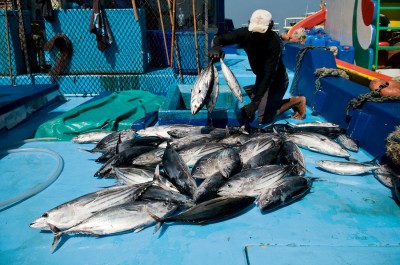| Online: | |
| Visits: | |
| Stories: |

| Story Views | |
| Now: | |
| Last Hour: | |
| Last 24 Hours: | |
| Total: | |
Fukushima Aftermath: Radiation Levels In US Tuna Triple
The amount of radiation detected in tuna caught off the coast of Oregon has tripled since the Fukushima catastrophe in 2011, scientists have discovered.
Researchers at Oregon State University (OSU) say the level is minute but has been increasing steadily for the past few years.
“You can’t say there is absolutely zero risk because any radiation is assumed to carry at least some small risk,” Delvan Neville, the graduate research assistant who oversaw the study, said. “But these trace levels are too small to be a realistic concern.”
Neville and his associates tested albacore tuna caught off the Oregon coast between 2011 and 2014 to see what effect Fukushima had upon the fish. They found that the level of radioactive cesium traces in the fish increased by 300 percent.
Radiation levels detected were a thousand times lower than the maximum safe level set by United States Department of Agriculture, The Salem Statesman-Journal newspaper reported.
“A year of eating albacore with these cesium traces is about the same dose of radiation as you get from spending 23 seconds in a stuffy basement from radon gas,” Neville said.
The parts of the tuna most likely to be eaten by people contain just as much radiation as other parts of the fish, the researchers determined.
Source: http://www.offthegridnews.com/2014/05/01/fukushima-aftermath-radiation-levels-in-us-tuna-triple/




